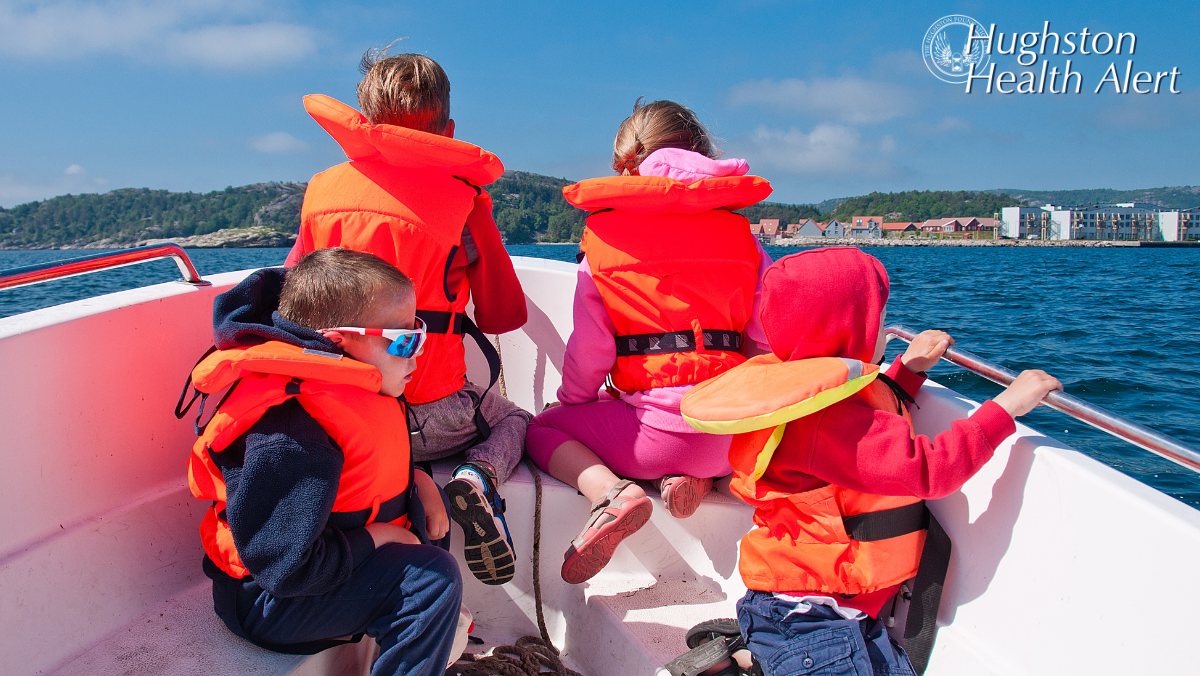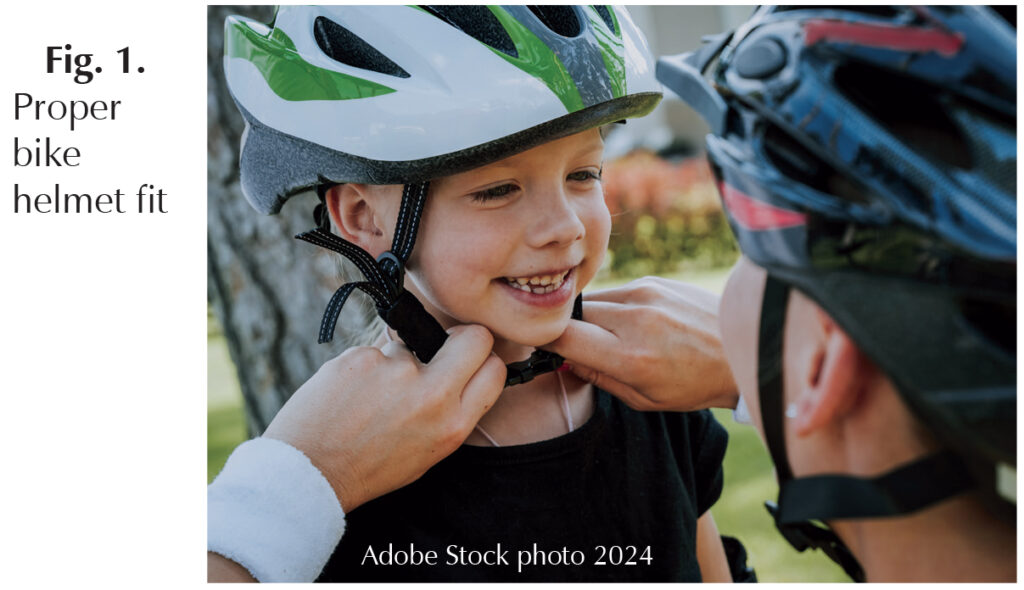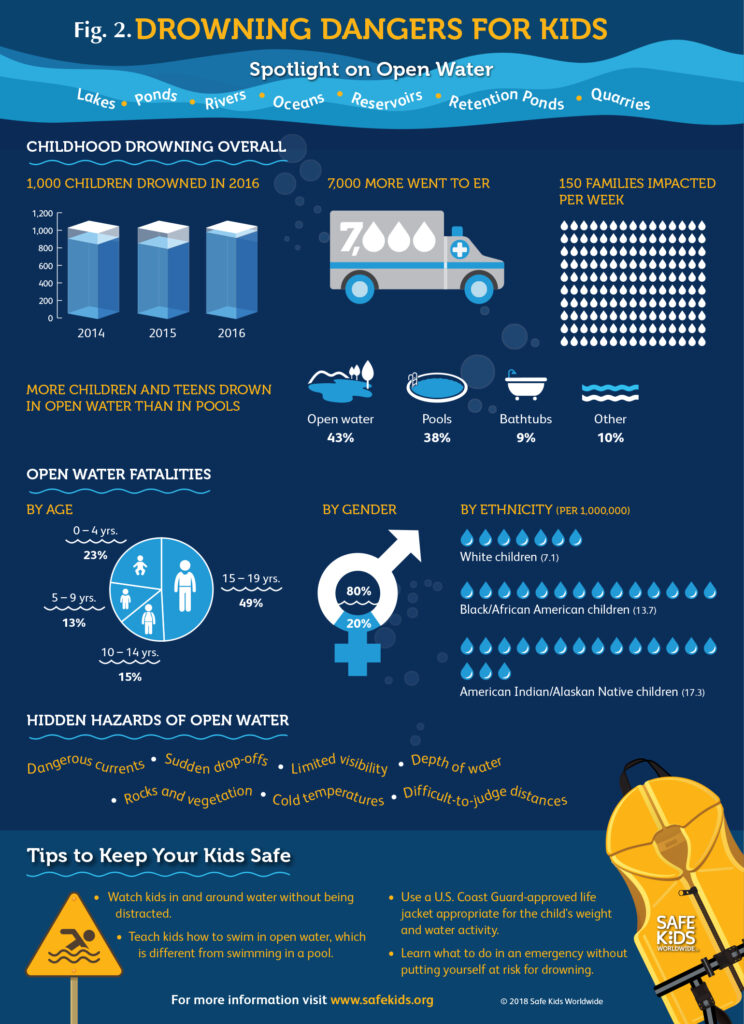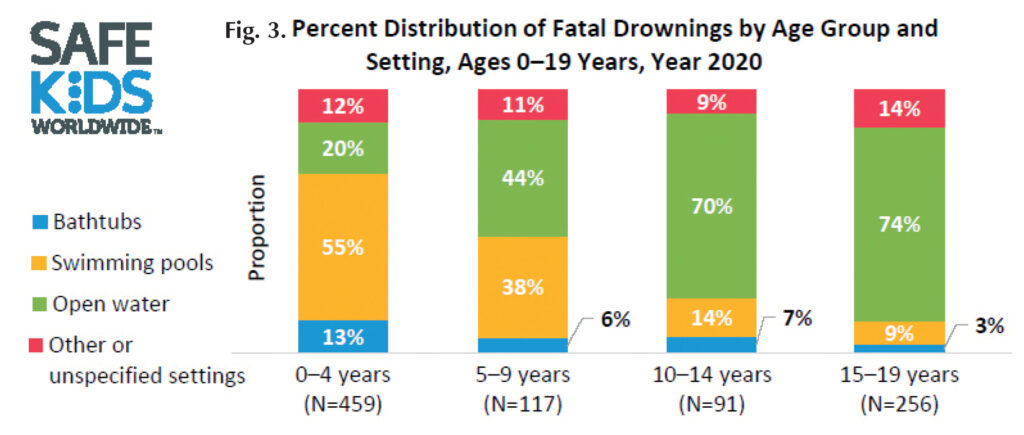
As temperatures rise outdoors, families often enjoy recreational activities that are part of a healthy, enjoyable lifestyle. Biking and swimming are examples of common physical activities when beautiful days present themselves. However, using appropriate safety gear such as bike helmets and life jackets are critical to the prevention of injury; but also modeling a culture of safety for kids, as well as creating effective routine habits support quality of life goals for families. To improve these areas, Safe Kids Worldwide explores and implement programs to maximize safety gear, which includes proper fit, consistent use, and gear accessibility.
Bike helmets
The Centers for Disease Control (CDC) Heads Up – Safe Brain, Stronger Future campaign indicates, “while there is no concussion-proof helmet, a bike helmet can help protect a child or teen from a serious brain injury.” Safe Kids Worldwide reports that helmets can reduce the risk of severe brain injuries by 88%; yet, only 45% of children 14 and under consistently wear a bike helmet.

Safety advocates developed bike helmets to protect riders from traumatic head injury in the case of an accident or collision. Proper fit of safety gear is paramount to the effectiveness it will yield during a crash. Safety gear should not be treated with the mindset of a child’s winter coat, which is often purchased a size larger to extend its use another year. For safety gear to protect the individual optimally, use the “right fit, right now” mindset. When considering proper fit of a bike helmet, follow the guidelines of the helmet manufacturer for head size. The helmet should fit snug on the rider’s head. Many bike helmets have adjustable pads to aid with sizing. The front of the helmet should sit on the persons forehead with no more than 2 fingers above the eyebrows, the side straps should make a “V” shape around the rider’s ears, and when snapped, you should not be able to fit more than 2 fingers between the chin and the helmet strap. Once you make all adjustments, check to make sure the helmet does not move side to side or from front to back (Fig. 1).
Life jackets

The Hidden Hazards study by Safe Kids Worldwide reveals open water, including both natural and man-made bodies of water (such as lakes, rivers, reservoirs, and retention ponds), has hidden hazards that increase the risk of drowning (Figs. 2 & 3). The study reveals that more children and teens drown in open water than in pools, and more than 8 in 10 fatal open-water drowning victims among children 0 to 19 years were male.¹ The use of a US Coast Guard approved life jacket when boating or swimming and keeping weak and nonswimmers in a life jacket when they are around water are the best steps to prevent drowning.
Often mandated by law, personal flotation devices (PFD), commonly referred to as life jackets, provide floatation to individuals who cannot swim, may be tired, injured, or even unconscious. They also provide support in the water to allow the head to remain above the water line and may include additional head support for infants. For a proper fit, select a life jacket according to weight, size, and class. First, confirm that the manufacturer’s label indicates the PFD is US Coast Guard approved and that the device is the appropriate weight range for the individual wearing it. The straps of a properly sized PFD will adequately fit around the person’s mid-section. Then fasten the life jacket so it will remain on the individual if they fall or wander into the water. The class of life jacket needed relates to the type of water and activity the person plans to encounter. To fit check, ask the individual to hold their arms straight up while you gently pull upward at the top of the arm openings. The life jacket should not ride up over the chin or face.

Getting the right gear
Financial barriers to obtain proper recreational gear is a reality for some families. Many communities support organizations such as Safe Kids Coalitions, which are designed to prevent unintentional injuries and deaths and whose mission includes the distribution of safety gear, such as bike helmets, car seats, and life jackets. Loaner stations at boating docks make PFD’s readily accessible for individuals enjoying outdoor activities near open water. Water recreation enthusiasts can locate area loaner stations by visiting boatingsafety.com. Access to safety gear preserves the health and safety of a community during recreational activities.
Creating good habits
Properly fitted gear paired with consistent usage can mitigate the risk of injury. Many states such as Georgia have laws that require bike helmet usage for kids 16 and under. The Lead the Way campaign by Safe Kids Worldwide urges consistent safety gear use for the entire family and challenges parents and adults to model appropriate gear usage every time. Parents are encouraged to form a safety gear habit with their children from the very start in lieu of trying to discern strategies to change behavior when the child has adjusted to risk taking during recreational activities. One such example would be to hang the helmet near the bike but away from direct sunlight for ease of access prior to riding. This measure can be successful when combined with positive feedback when the helmet is used or temporary loss of bike privileges if not.
Supervision matters
When considering child recreational safety, supervision is certainly the common denominator for success. Safe Kids Worldwide offers a Water Watcher Card for families to use during any water related activity. You can download the Water Watcher Card at safekids.org. The card provides a no distraction reminder for a parent to keep eyes on the children in water for a specified time and then pass along the card to the next assigned parent. It empowers adults to use a safety plan so the fun can continue. Using properly fitted safety devices during recreational activities will keep your kids safe while cycling, boating, and swimming all summer long.
Author: Pam Fair | Columbus, Georgia
Reference:
- MacKay JM, Samuel E, Green A. Hidden Hazards: An Exploration of Open Water Drowning and Risks for Children. Washington D.C.: Safe Kids Worldwide, May 2018.
Last edited on September 13, 2024